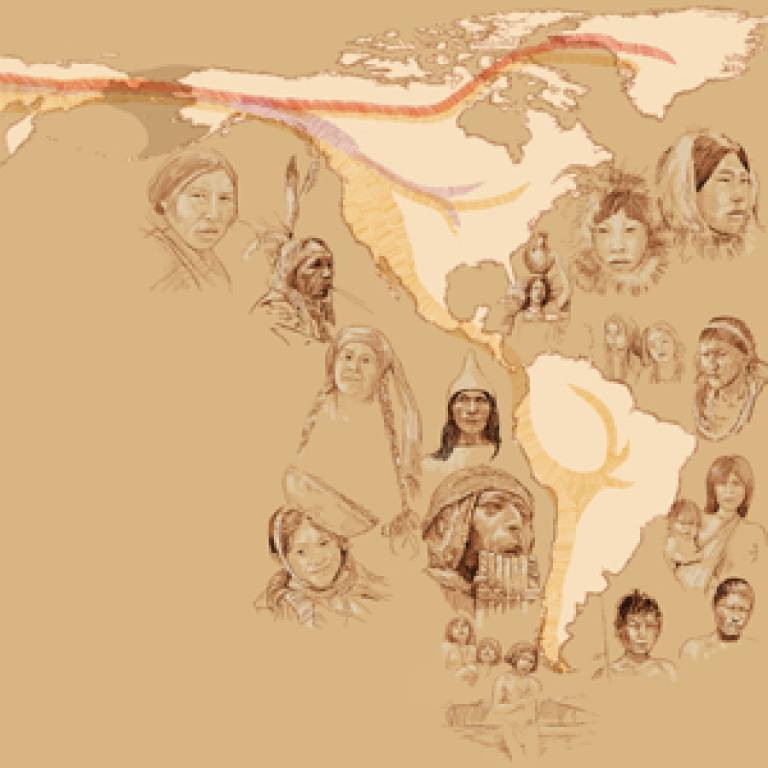For centuries, the question of where North American natives originated has captivated historians, anthropologists, and scientists alike. Recent genetic research has provided compelling answers, revealing a fascinating story of ancient migrations and complex ancestry that stretches back millennia. These studies shed light on the origins of the indigenous populations across the Americas, from the northern reaches of Canada to the southern tip of Chile, pinpointing the key migrations that shaped the genetic landscape of the continent.
The Bering Strait Migration: The Primary Origin
The most significant chapter in the story of Native American origins begins with the Bering Strait. During the last Ice Age, a land bridge known as Beringia emerged, connecting Asia and North America. This land bridge served as the gateway for the first inhabitants of the Americas, often referred to as the “First Americans.” Genetic evidence overwhelmingly supports the theory that the vast majority of Native American populations are descendants of a single group of these First American migrants who crossed Beringia over 15,000 years ago. This initial migration event laid the foundation for the peopling of the Americas, with these pioneers venturing southward and populating the entire continent.
 Bering Land Bridge Theory: Illustrating the primary migration route of First Americans from Asia to North America, the ancestral homeland of most Native Americans.
Bering Land Bridge Theory: Illustrating the primary migration route of First Americans from Asia to North America, the ancestral homeland of most Native Americans.
Multiple Waves of Migration: Arctic and Na-Dene Contributions
While the First American migration through Beringia is the dominant origin story, genetic studies have also uncovered evidence of subsequent migrations from Asia that contributed to specific Native American groups. Two later migration events, distinct from the initial Beringian crossing, have been identified as having genetic impacts, primarily on Arctic populations speaking Eskimo-Aleut languages and the Canadian Chipewyan who speak Na-Dene languages.
However, it’s crucial to note that even these groups, influenced by later migrations, primarily trace their ancestry back to the First Americans. Eskimo-Aleut speakers derive over 50% of their DNA from the First American lineage, and the Chipewyan around 90%. This indicates that these later migrants from Asia mixed with the already established First American populations upon their arrival in North America, adding to the genetic diversity but not replacing the foundational ancestry.
Southward Expansion and Genetic Diversity Across the Americas
Once in the Americas, the descendants of the First Americans embarked on a remarkable journey southward, spreading rapidly along the coastlines. As populations dispersed, they branched out, forming distinct groups with limited genetic exchange between them, particularly in South America. This geographical separation led to genetic divergence and the rich tapestry of genetic diversity observed among Native American populations today.
Interestingly, research has revealed exceptions to this general pattern of dispersal. For example, Chibchan-speakers in Central America exhibit genetic links to both North and South America, suggesting a back-migration from South America and the mixing of previously separated ancestral groups. Another intriguing finding is the presence of “First American” DNA in Siberian groups like the Naukan and coastal Chukchi, indicating a migration back to Asia from Eskimo-Aleut speakers, carrying Native American genes westward.
Unlocking Ancient DNA: Overcoming Modern Genetic Mixing for Clarity
Studying the origins of Native Americans presents unique challenges due to the genetic mixing that occurred following European and African immigration starting in 1492. Centuries of intermingling have introduced European and African genetic material into Native American genomes, complicating the analysis of pre-Columbian ancestry.
To overcome this hurdle, scientists have developed sophisticated methods to isolate and analyze the sections of DNA that are purely of Native American origin. These advanced techniques allow researchers to “peel back” the layers of genetic admixture, focusing on the ancestral genetic signals to reconstruct the relationships and migration history of Native Americans before the arrival of Europeans and Africans. This methodological progress has been critical in deepening our understanding of Native American origins and population history.
Conclusion: A Complex Tapestry of Migrations
In conclusion, the question of where North American natives came from is answered by a compelling narrative of multiple migrations, with the Bering Strait playing a pivotal role as the primary entry point for the First Americans. While subsequent migrations contributed to specific groups, the vast majority of Native American ancestry across the Americas originates from this initial Beringian migration. The southward expansion, genetic divergence, and instances of back-migration and genetic mixing further enrich this complex story. Through advanced genetic research, we continue to unravel the intricate details of Native American origins, gaining a deeper appreciation for the history and diversity of the indigenous peoples of the Americas.
